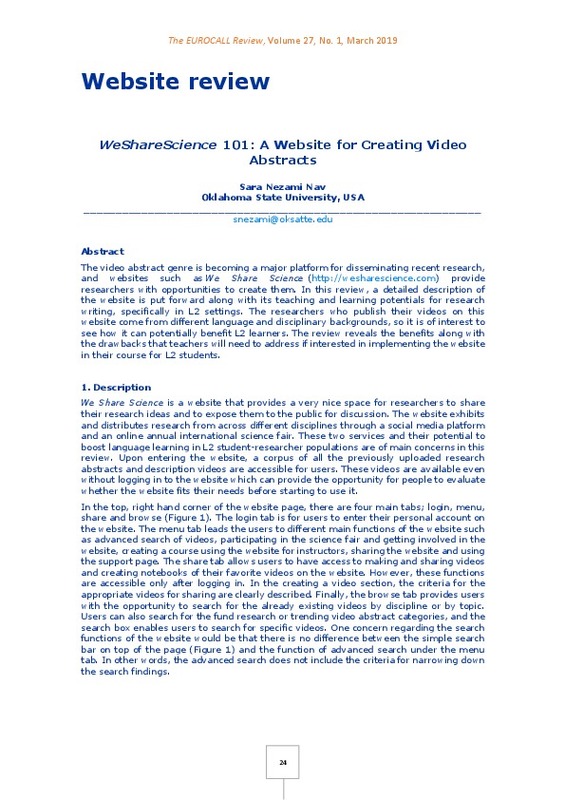JavaScript is disabled for your browser. Some features of this site may not work without it.
Buscar en RiuNet
Listar
Mi cuenta
Estadísticas
Ayuda RiuNet
Admin. UPV
WeShareScience 101: A Website for Creating Video Abstracts
Mostrar el registro completo del ítem
Nezami Nav, S. (2019). WeShareScience 101: A Website for Creating Video Abstracts. The EuroCALL Review. 27(1):24-29. https://doi.org/10.4995/eurocall.2019.11178
Por favor, use este identificador para citar o enlazar este ítem: http://hdl.handle.net/10251/138314
Ficheros en el ítem
Metadatos del ítem
| Título: | WeShareScience 101: A Website for Creating Video Abstracts | |
| Autor: | ||
| Fecha difusión: |
|
|
| Resumen: |
[EN] Video abstracts are becoming a major platform for disseminating recent research and websites such as We Share Science (http://wesharescience.com) provide researchers with opportunities to create them. In this review, ...[+]
|
|
| Palabras clave: |
|
|
| Derechos de uso: | Reconocimiento - No comercial - Sin obra derivada (by-nc-nd) | |
| Fuente: |
|
|
| DOI: |
|
|
| Editorial: |
|
|
| Versión del editor: | https://doi.org/10.4995/eurocall.2019.11178 | |
| Tipo: |
|









